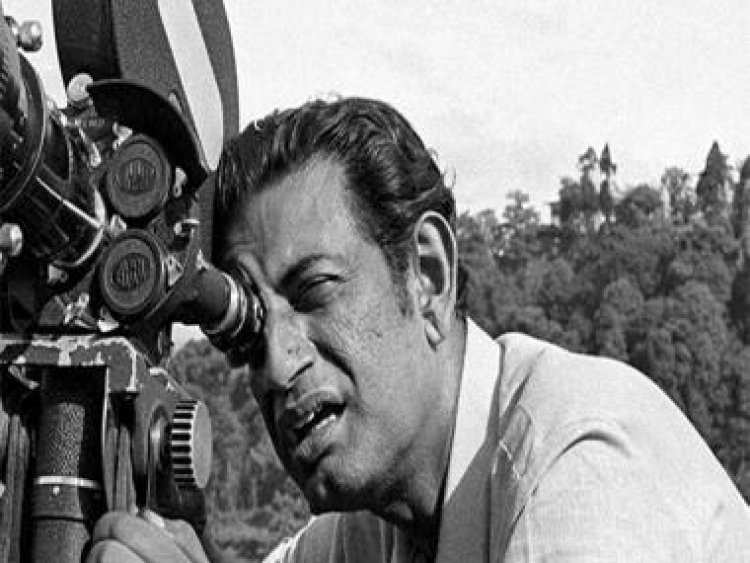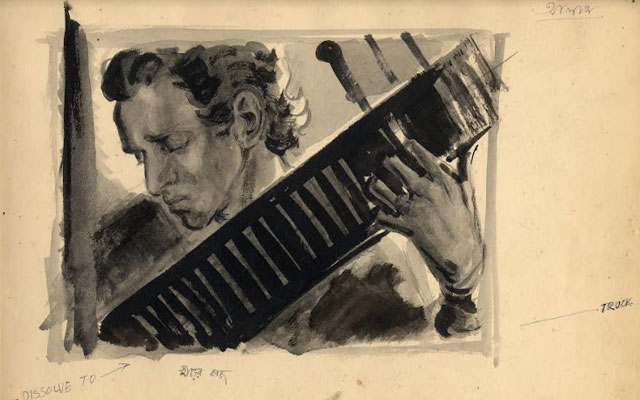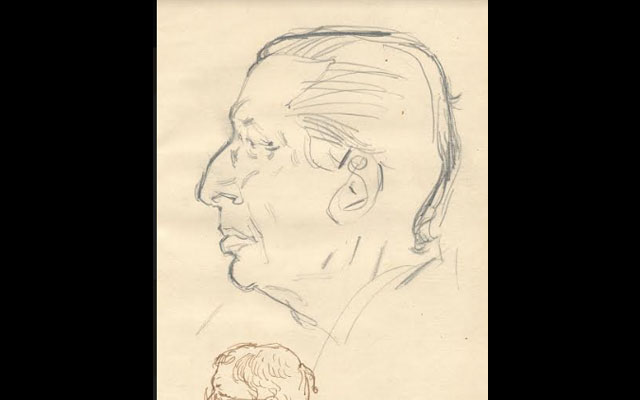Ray-esque | Satyajit Ray’s unrealised films
Ray-esque | Satyajit Ray’s unrealised films

Movie maestro Satyajit Ray had once contemplated making a short film on virtuosic sitarist Pandit Ravi Shankar. The movie would have seen Pandit Ravi Shankar playing a single raga. That did not finally materialize because Pandit Ravi Shankar was very busy with performances worldwide.

Ray had also contemplated turning the Dice Game in Mahabharat into a film. He had visualised the project on a grand scale with an Indian and international cast. Names like Toshiro Mifune (of Akira Kurosawa fame) had been considered. But, the master finally realized that the budget would go through the roof. Besides, he understood that wider audiences could find it testing to fathom relationships between multiple characters.
Again around 1972, Ray planned a film on Buddhadeb Basu’s Ekti Jibon (Life of a Man). The book revolved around an individual struggling to work on the Bengali Abhidhaan (Bengali dictionary). Ray had thought of casting Kanu Bandopadhyay (of Pather Panchali fame) in the role of the protagonist. Kanu Bandopadhyay had brought off the unforgettable character of Harihar in Ray’s first magnum opus Pather Panchali (Song of the Little Road). Ray had also invited Bandopadhyay at his residence to discuss the project.

“But, Kanu Banerjee had aged quite a bit by then. And, since the time span of the character in the book stretched over a long while, from a slightly youngish role to a man grown in years, father ran into a casting problem,” recalls Sandip, Satyajit Ray’s son. Ray had even penned the script of Ekti Jibon up to a point. But, realised it was a huge hurdle to translate the script into reality. In turn, he switched to Bibhutibhushan Bandopadhyay’s Ashani Sanket (Distant Thunder) which went off very smoothly.
“Interestingly, if one flips through the pages of Ashani Sanket’s script, you will discover the unfinished script of Ekti Jibon,” says Sandip. Incidentally Ashani Sanket went on to win the Golden Bear at the Berlin Film Festival. “In wake of Ashani Sanket’s thumping success, father had mulled making a short film, Drobomoyeer Kashibash (Drobomoyee’s Life in Benares), based on a writing by Tarashankar Bandopadhyay. He had also weighed making a short film based on another plot, Debotar Janmya (Birth of a God), written by Shibram Chakraborty. It was planned as a slapstick bereft of dialogue. It would have been a satirical film. Sarat Chandra Chattopadhyay’s Mahesh was also under consideration. Ichamati, authored by Bibhutibhusan Bandopadhyay was also planned.
But, all these projects remained largely at the cerebral level. Ravi Shankar and Ekti Jibon were the only two scripts which had progressed to a great extent. And, of course, Alien was the only complete script for which Ray had travelled to Hollywood for talks with Columbia Pictures and to other locales back home for location hunting with his art director Bansi Chandragupta and cinematographer, Subrata Mitra. “An official from Columbia had also flown across to Calcutta for discussions with father,” informs Sandip. Satyajit Ray had also corresponded a great deal on Alien with his friend and world famous science fiction writer Arthur C. Clarke. Finally, the movie failed to materialise because of extremely strange circumstances and it turned out to be an ‘ordeal’ as Ray expressed.
“Alien was initially titled Avataar. The title underwent a change as discussions progressed. This was in the mid-sixties. Then, things came to a standstill. Plans for making the Alien saw a resurrection in the seventies when a representative from a law firm in the US visited father and suggested reviving the project,” says Sandip. “In time, Steven Spielberg’s ET opened at theatres the world over. At this juncture, father finally wrote off creating the Alien because Spielberg’s ET and Alien’s script uncannily reflect strong resemblances. In wake of ET, father aired that if, perchance, he happened to make Alien after ET, audiences would react and point fingers at him saying that he had lifted the film from ET,” drives home Sandip. Incidentally, ET was also produced by Columbia Pictures.
The cast of Alien could have, interestingly, included names like Peter Sellers, Steve McQueen and Marlon Brando. These names were being considered…Someone from the US end had also suggested to Ray that one could also cast an actor who had become hot property in Hollywood after acting in the film, Barefoot in the Park. The actor was Robert Redford. This was before Redford’s unforgettable role in Butch Cassidy and the Sundance Kid with Paul Newman.
“More than any other unrealised Ray film, I am pained about the Alien. One can visualize it would have been a fantastic experience notwithstanding that movies have undergone a huge technological advancement now. I say this because my father had conceived of fabulous special effects in the film,” expresses Sandip. In the same breath, Sandip agrees that Stanley Kubrick’s 2001: A Space Odyssey, which enjoyed mind-boggling special effects, was also made in 1968, around the same time as Alien was contemplated. “In any case, the huge resources of Columbia Pictures would have been at our disposal,” underlines Sandip.
The only other complete script or storyboard revolved around the Ravi Shankar short film. This was just after Pather Panchali which also grew out of a storyboard format. In fact, the first draft of Pather Panchali was not only written in English, Ray used to pass on instructions to his famous cinematographer, Subrata Mitra, through Gold Flake cigarette foils. Pather Panchali, as many are aware now, was finished through severe financial constraints. In fact, Satyajit Ray’s wife Bijoya Ray pawned her jewellery and Ray also sold some of his prize books to raise funds for the film.
Interestingly, the books that Ray sold during Pather Panchali surfaced at a collector’s. “The collector called me and requested me to check the signatures of father in the books. He felt that they didn’t match father’s signature. I went across to the collector’s house and discovered that signatures were authentic. Just that they were father’s style of signing in the early days. A signature, after all sees various variations during an individual’s lifetime. Ironically, the collector wanted to sell the books to me. But, he demanded such tall prices, I was compelled to back out,” recalls Sandip. “We also came upon the scripts of Teen Kanya (Three Daughters) with a collector. He was so smart that he carved out the three scripts separately from father’s (famous) ‘kheror khata’ (red cloth-bound notebooks in which Ray wrote his film scripts) and bound them in raw silk as three exclusive screenplays. He was placing a tag of Rs 2.5-3 lakh for each script. It was too stiff an ask,” reveals Sandip.
“But, one must admit they were in extremely good condition. Who knows what else of father’s works will surface in the future. For instance, we are aware that Charulata’s film script is gone. The manuscript of my father’s autobiographical writing, ‘My Years with Apu’ is missing. The last Feluda manuscript, Robertsoner Ruby (Robertson Ruby) has also vanished.
Maybe, it calls for a Feluda to unearth the maestro’s lost treasures.
Ashoke Nag is a veteran writer on art and culture with a special interest in legendary filmmaker Satyajit Ray.
All images from Satyajit Ray Society.
Read all the Latest News, Trending News, Cricket News, Bollywood News, India News and Entertainment News here. Follow us on Facebook, Twitter and Instagram.
What's Your Reaction?



























































